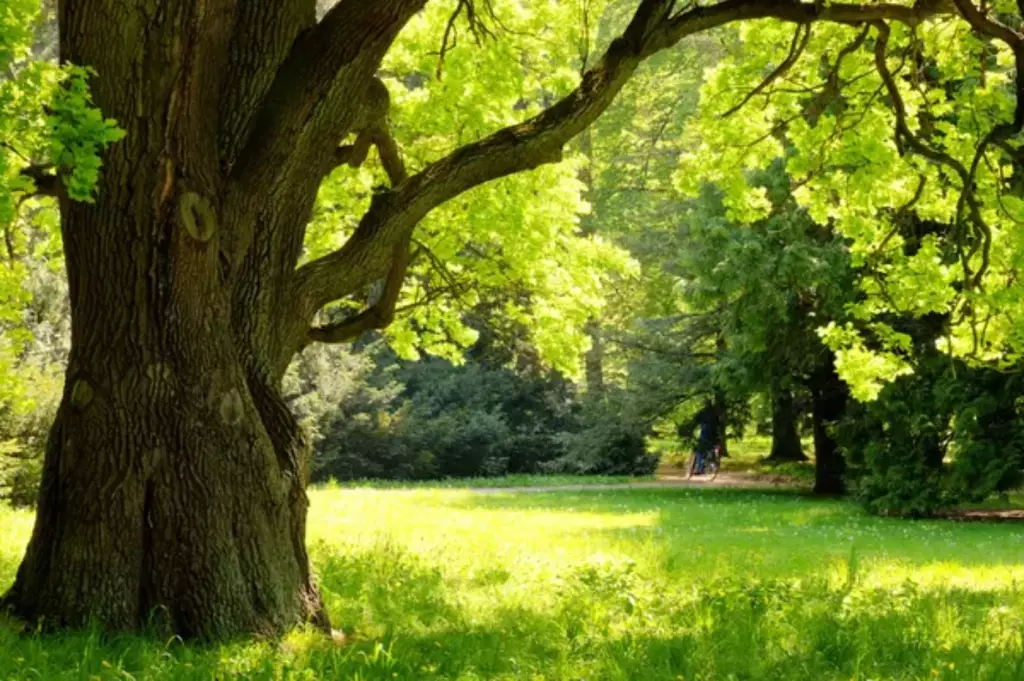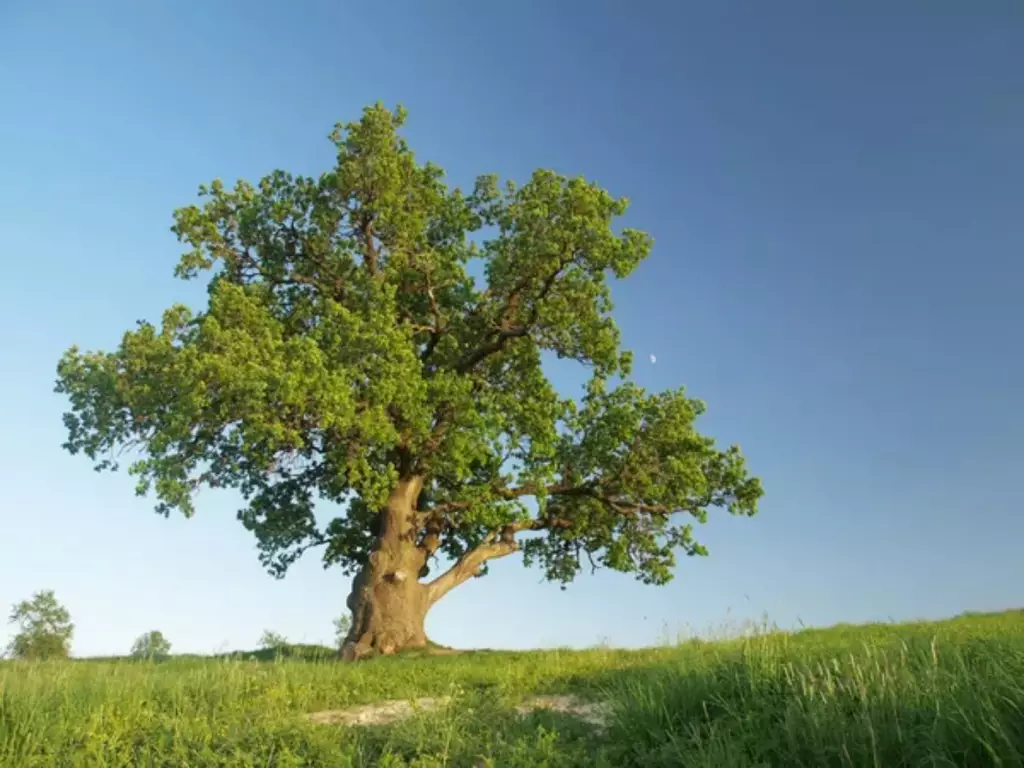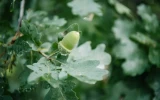How Much Is a Large Oak Tree Worth? (30-50-100ft)
There are over 600 species of oak trees, and their value mostly depends on their size, species, and location. In general, larger oak trees are worth more than smaller trees, and certain species are more valuable than others. In this article, we'll find out how much oak trees measuring 30, 50, and 100 feet tall are worth and how their size affects their value.
A 30-foot oak tree is worth around $1,000–$2,000, while a 50-foot oak tree is worth $3,000–$5,000. A 100-foot oak tree could be worth anywhere from $8,000 to $15,000 or more. Also, a healthy and well-maintained tree has more value than a diseased or damaged one.
Oak trees in California may be worth more than oak trees in other states due to the high demand for wood products in the state. Let's further discuss how each of these factors affects the overall value of a large oak tree.
Summary
- A 100-foot oak tree with a diameter of 36 inches at breast height (DBH) can produce around 4,000 board feet of timber.
- Oak trees measuring 40–60 feet and over 100 years old have an estimated value of $5,000–$10,000.
- An oak tree that is situated in a prime location may have a higher value than an oak tree that is located in a remote forest or a less populated area.
- White oak and swamp white oak have the highest value at $4–$10 per board foot among the species of oak trees.

Estimated Value of A Large Oak Tree
The table below shows the estimated total value of the different sizes of oak trees:
| Tree Height | Total Estimated Value |
|---|---|
| 30 feet | $1,000 - $2,000 |
| 50 feet | $3,000 - $5,000 |
| 100 feet | $8,000 - $15,000 or more |
A 30-foot oak tree has an estimated value between $1,000 - $2,000
In general, a 30-foot oak tree can have significant value, especially if it's a mature tree with a wide trunk. Some of the factors that can influence its value include:
Timber value of a 30-foot oak tree
If the tree is suitable for timber production, its value can be determined by the volume of wood it contains, as well as its quality and market demand.
The timber value of a 30-foot oak tree may not be as high as that of a larger, more mature tree, but it can still be significant, especially if the tree has a wide trunk and a good form.
The value of the timber can be determined by the volume of wood the tree contains, which can be estimated based on its diameter at breast height (DBH) and height.
To calculate the timber value of a 30-foot oak tree, you would need to measure its DBH and estimate its height, then use a timber pricing guide to determine the value of the wood.

The price of oak timber can vary depending on the region, the quality of the wood, and the intended use. For example, oak logs that are suitable for sawing into lumber can command a higher price than those that are only suitable for firewood.
Landscape value of a 30-foot oak tree
If the tree is located on a residential or commercial property, its value can be based on its aesthetic and environmental benefits. A large oak tree can provide shade, improve air quality, and enhance the curb appeal of a property, which can increase its overall value.
Here are some ways in which a 30-foot oak tree can enhance the landscape value of a property:
- Aesthetic appeal: A 30-foot oak tree can be a focal point of a property's landscape, providing shade, texture, and visual interest.
Oak trees have a distinctive shape and canopy, with large, lobed leaves that turn bright colors in the fall.
They can also be used to frame views, create natural screens, and add depth and dimension to a garden or yard.
- Environmental benefits: A 30-foot oak tree can provide a range of environmental benefits that can enhance the overall value of a property.
It can help to reduce energy costs by shading buildings and reducing the need for air conditioning. It can also help to improve air and water quality by filtering pollutants and capturing carbon dioxide.
- Property value: A 30-foot oak tree can increase the overall value of a property, especially if it is well-maintained and healthy. According to some studies, mature trees can add up to 10% to the value of a property, depending on their size, species, and condition.
Ecological value of an oak tree
A 30-foot oak tree can provide habitat for a wide range of wildlife, including birds, mammals, insects, and fungi. It can also help to sequester carbon dioxide from the atmosphere, which can help to mitigate the effects of climate change.
A 30-foot oak tree can also help to improve soil and water quality by reducing erosion, increasing infiltration, and filtering pollutants. The tree's roots can help stabilize soil, prevent runoff, and absorb excess nutrients and chemicals, while its leaves and branches can intercept rainfall and reduce the impact of stormwater runoff.
A 50-foot oak tree has an estimated value between $3,000 - $5,000
A 50-foot oak tree can be worth more than a 30-foot oak tree due to its size and age. Here are some factors that can influence the value of a 50-foot oak tree:
Timber value of a 50-foot oak tree
A 50-foot oak tree can contain a significant volume of high-quality wood, which can be used for furniture, flooring, cabinetry, and other high-end products.
In general, larger trees tend to have more valuable timber, as they can yield more wood that is suitable for high-end products. A 50-foot oak tree is a decent size and could potentially have a good timber value if it is of high quality.

However, note that the value of a single tree can vary widely based on the factors mentioned above, as well as other factors such as the current market conditions and the cost of harvesting and transporting the wood.
Landscape value of a 50-foot oak tree
A mature oak tree can provide many benefits to the landscape. It can provide shade, which can help to reduce energy costs and make outdoor spaces more comfortable.
The tree can also help to improve air quality by absorbing pollutants and producing oxygen. Additionally, oak trees can provide a habitat for wildlife, such as birds and squirrels.
In terms of property value, mature trees are often seen as a desirable feature in landscaping. A 50-foot oak tree can add to the aesthetic appeal of a property, making it more attractive to potential buyers.
It can also help to create a sense of privacy and seclusion, which can be especially valuable in urban or suburban areas.
Ecological value of a 50-foot oak tree
The ecological value of a 50-foot oak tree can be greater than that of a 30-foot oak tree due to its larger size and greater capacity to provide ecosystem services, in terms of the following:
-
Carbon sequestration: A 50-foot oak tree can store more carbon dioxide from the atmosphere, helping to mitigate climate change.
-
Habitat provision: The larger canopy of a 50-foot oak tree can provide more cover and nesting sites for birds, and the larger trunk can provide more crevices and cavities for insects and mammals.
-
Soil health: The roots of an oak tree with this size can penetrate deeper into the soil, helping to improve soil structure and nutrient cycling.
A 100-foot oak tree has an estimated value between $8,000 - $15,000 or more
A 100ft oak tree is a rare and valuable specimen and can be worth tens of thousands of dollars or more. In some states, such as Pennsylvania and New York, large oak trees are highly prized for their beauty and durability and can command top prices in the local market.
Timber value of a 100-foot oak tree
Generally, oak trees are highly valued for their timber due to their strength, durability, and attractive grain patterns. A 100-foot oak tree can yield a significant amount of timber, depending on its diameter and quality.
A 100-foot oak tree with a diameter of 36 inches at breast height (DBH) can produce around 4,000 board feet of timber, which is a significant amount.
The price of oak timber can vary depending on several factors, such as the quality of the wood, the location of the market, and the demand for the product, however, the average price for oak lumber is around $2 to $15 per board foot in the United States.
Based on this estimate, the 4,000 board feet of oak timber produced by a 100-foot oak tree with a diameter of 36 inches at breast height (DBH) could be worth anywhere from $12,000 to $28,000.
However, the actual price of the timber can vary based on many factors and should be determined by consulting with a professional forester or timber buyer who is knowledgeable about the local market conditions.
Landscape value of a 100-foot oak tree
A 100-foot oak tree can also have significant landscape value, particularly in urban or suburban settings where large trees are highly prized for their aesthetic and environmental benefits.
A mature oak tree can provide shade, reduce the urban heat island effect, improve air quality, and enhance the visual appeal of a neighborhood or property. In addition, a large oak tree can increase property values by as much as 10%, according to some studies.
Ecological value of a 100-foot oak tree
A 100-foot oak tree can have important ecological value, particularly in forested ecosystems where it provides habitat for a wide range of wildlife species. Oak trees are also known for their acorns, which provide a food source for birds, squirrels, and other animals.
In addition, the bark and leaves of oak trees provide habitat for insects and other invertebrates, which in turn support larger animals such as birds and mammals.
Large oak trees can also help to maintain soil health and prevent erosion, as their extensive root systems stabilize the soil and absorb water.
Factors Determining the Value of an Oak Tree
If you are wondering how much a large oak tree is worth, there are several factors to consider such as the following:
The size and age of an oak tree determines its value.
| Size of Oak Tree | Age of Oak Tree | Estimated Value |
|---|---|---|
| Small (10-20 feet) | 10-50 years | $500-$1,000 |
| Medium (20-40 feet) | 50-100 years | $1,000-$5,000 |
| Large (40-60 feet) | 100+ years | $5,000-$10,000 |
| Very large (60+ feet) | 100+ years | $10,000-$20,000+ |
The larger and older an oak tree is, the more valuable its wood is likely to be. This is because older trees tend to have denser, stronger wood that is better suited for high-end applications.
Large, mature oak trees can be stunningly beautiful and can provide important habitat for wildlife. They also play a critical role in the ecosystem, helping to filter pollutants from the air and water, and providing shade and oxygen.
The health and condition of the tree also play a significant role in its value
The quality of the oak tree wood is directly related to the health and condition of the tree. A healthy oak tree is characterized by a strong trunk, full and dense foliage, and a deep root system.
The trunk of a healthy oak tree is straight and sturdy, with no signs of decay or damage. The foliage of a healthy oak tree is thick and lush, with no signs of disease or insect infestation.

The root system of a healthy oak tree is deep and well-established, providing the tree with the necessary nutrients and water to thrive.
On the other hand, an oak tree that is in poor health or condition will have a lower value. A tree that is diseased or infested with insects will have weakened wood, which is less valuable for commercial use.
Additionally, a tree that has been damaged by storms or other environmental factors may have weakened or broken branches, which can also reduce its value.
The location of an oak tree can also impact its value
The table below shows how the value of an oak tree changes based on where they are located:
| Location | Estimated Oak Tree Value |
|---|---|
| Central Park, NYC | $50,000 - $100,000 |
| Beverly Hills, CA | $20,000 - $50,000 |
| Forest in Maine | $5,000 - $10,000 |
- An oak tree that is situated in a prime location, such as a public park or a residential area, may have a higher value than an oak tree that is located in a remote forest or a less populated area.
The reason for this is that an oak tree in a prime location can provide several benefits to the community, such as shade, aesthetic value, and environmental benefits.
- An oak tree located near a commercial area or a busy street may have a lower value than an oak tree located in a quiet residential area.
This is because the pollution and noise from the traffic can have a negative impact on the health and growth of the oak tree, reducing its value.
- An oak tree located in a difficult-to-reach area, such as a steep slope or a rocky terrain, may require more effort and resources to maintain and prune, which can increase its maintenance costs and reduce its value.
The species and quality of an oak tree can also affect its value
Different species of oak trees have different characteristics and uses, which can affect their value, such as the ones in the table below:
| Oak Tree Species | Common Uses | Estimated Value (per board foot) |
|---|---|---|
| White oak | Furniture, flooring, barrels, shipbuilding, outdoor structures | $4-$10 |
| Red oak | Cabinetry, interior trim, furniture, flooring, veneer | $2-$6 |
| Black oak | Flooring, furniture, cabinetry, veneer | $2-$6 |
| Bur oak | Furniture, flooring, cabinetry, veneer, fence posts | $2-$6 |
| Pin oak | Furniture, flooring, cabinetry, veneer | $2-$6 |
| Swamp white oak | Furniture, flooring, cabinetry, veneer | $4-$10 |
| Chestnut oak | Furniture, flooring, cabinetry, veneer, fence posts | $2-$6 |
| Oregon white oak | Furniture, flooring, cabinetry, veneer | $4-$10 |
White oak is highly valued for its strength and durability, making it a popular choice for furniture and flooring. Red oak, on the other hand, is more commonly used for cabinetry and interior trim.
Red oak and white oak trees are considered to be one of the most profitable hardwood trees you can grow by yourself.
In addition to species, the quality of an oak tree can also affect its value. A large, straight oak tree with few defects will likely be more valuable than a smaller, crooked tree with many knots.

The market demand also affects the value of an oak tree
If there is a high demand for oak furniture or flooring, the value of oak trees may be higher. Conversely, if there is a surplus of oak lumber on the market, the value of oak trees may be lower.
Trees located in areas with high demand for oak lumber, such as in the eastern United States, may be worth more than trees located in areas with lower demand.
You can learn more about the profitability of oak trees per acre in this article.


